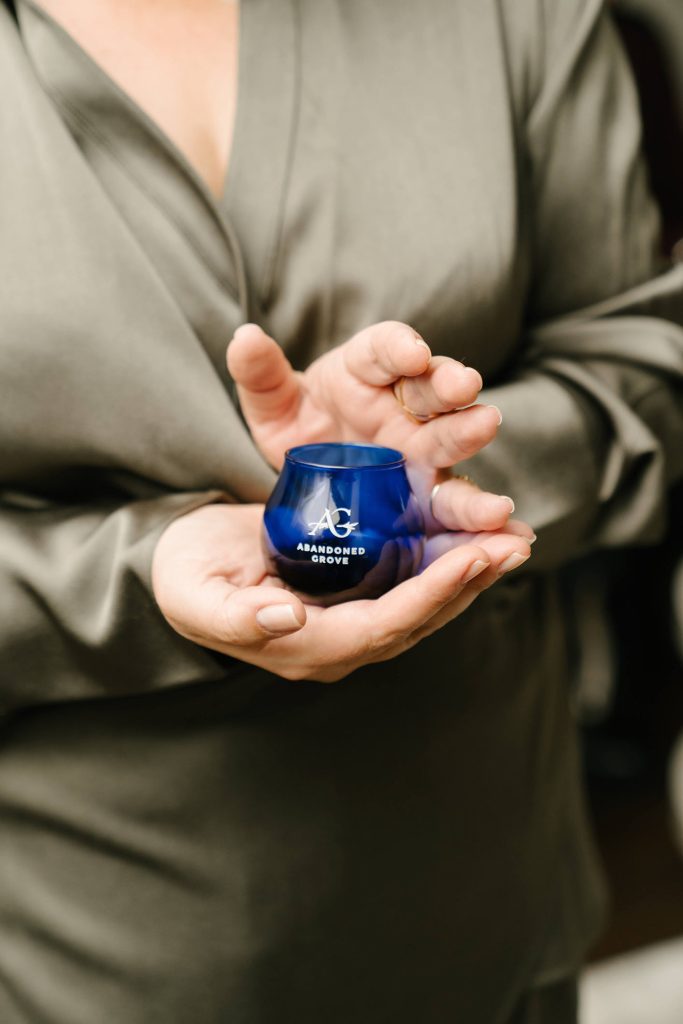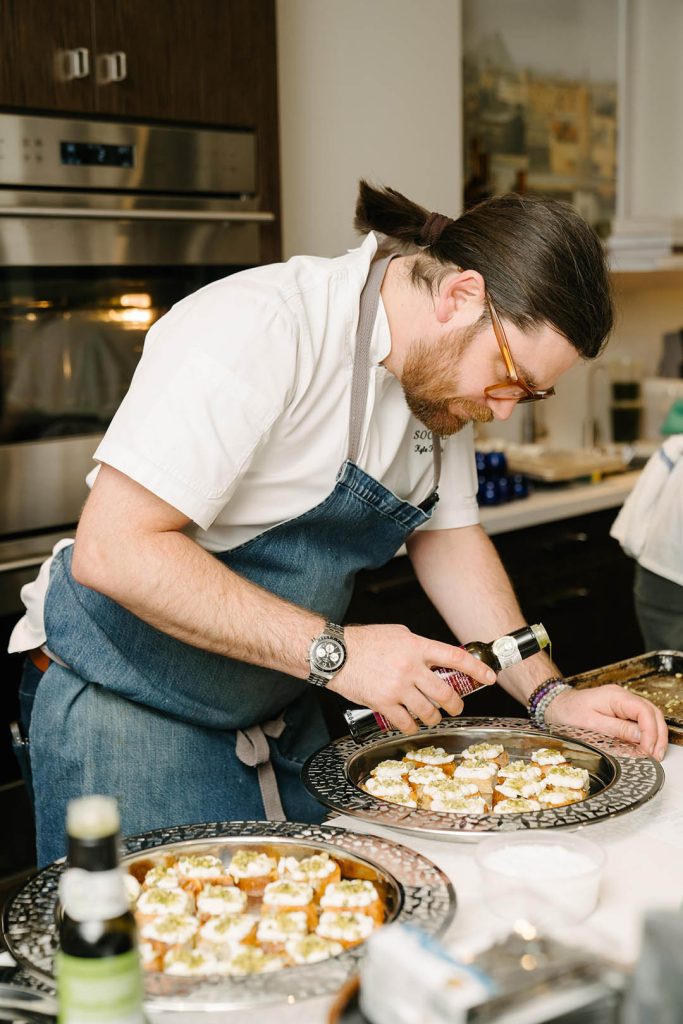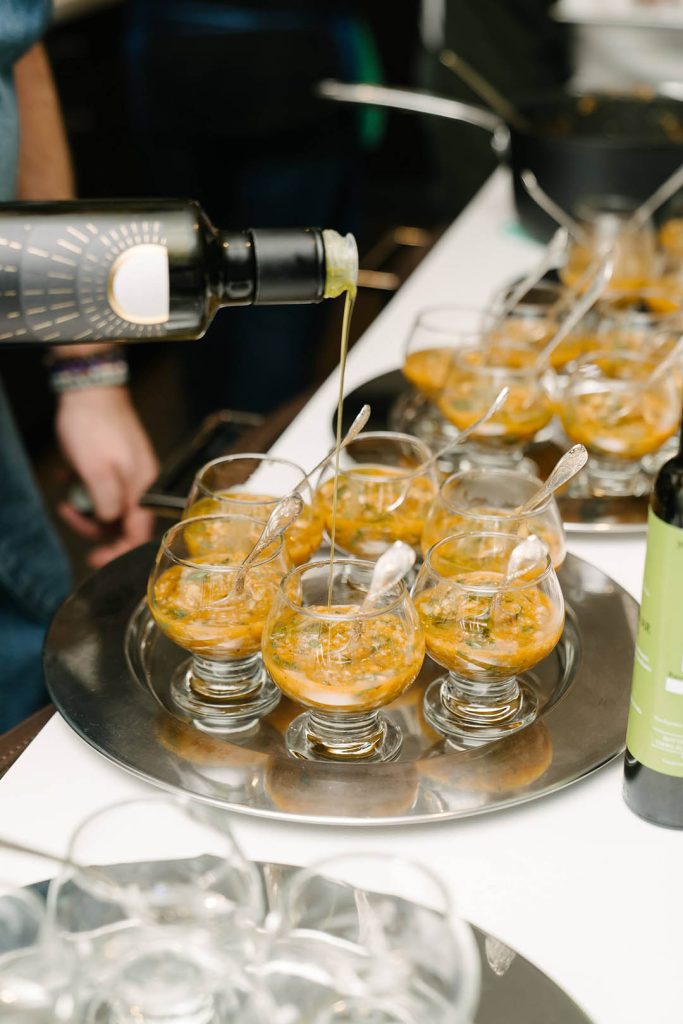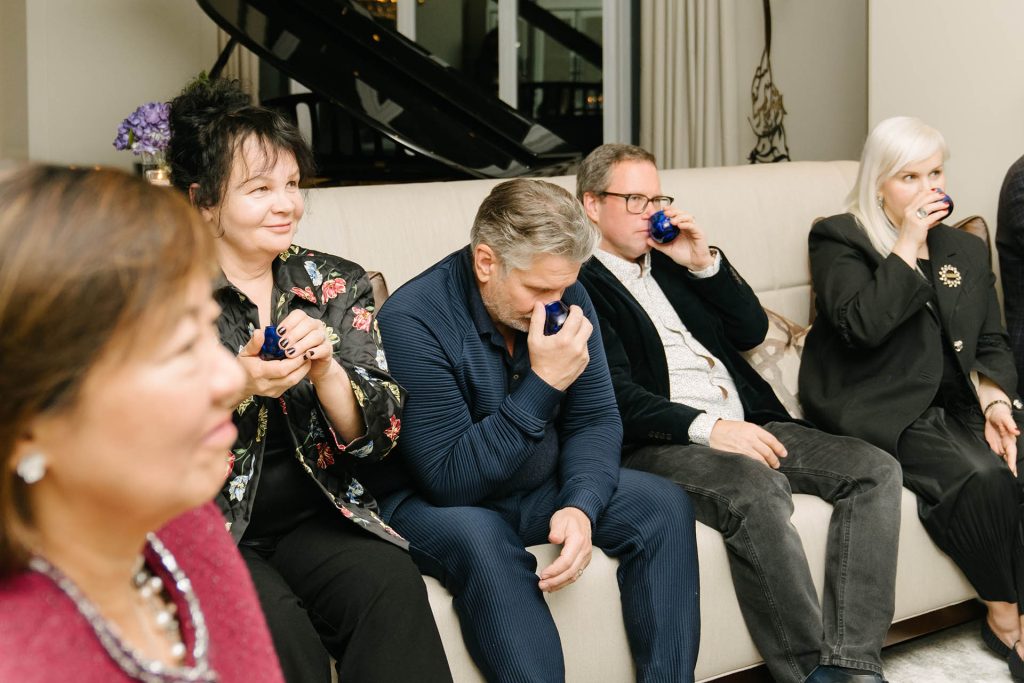From Grove to Table
Words by Ruba

Fil Buccchino, the only Canadian recognized in the Italian Directory of Virgin and Extra Virgin Olive Oil Experts, shares the disquieting revelation that most of the olive oil we find on supermarket shelves is defective. A group of 20 or so are gathered at a Cin Cin event organized to educate on extra virgin olive oil, or what Fil describes as “fresh fruit juice”. As such he explains, the oil changes daily and must be consumed as early as possible, unlike wine which lasts a long time because it contains alcohol and can preserve itself. We learn from Fil that the biggest crime in the world of olive oil is not the fraud that happens in the industry but the fact that we have become so accustomed to the taste of defective olive oil that we associate that taste with what olive oil should taste like.
Defectiveness in olive oil, we understand, mainly comes in the form of fustiness due to advanced fermentation in olives that sit for too long between harvesting and milling, and rancidity due to oxidation that results from exposure to air, heat and light.
The reality is that making olive oil is easy; if you squeeze olives after all, you’re going to get juice. But making great olive oil is extremely difficult, requiring expense, expertise, time and patience. As a result, big industry producers, driven by profit, adulterate olive oil with inferior quality vegetable oils and other additives. Even more unfortunate is that many producers abandon their olive groves altogether because of the challenge and expense of cultivation which renders them unable to compete with the low prices offered by big industry that sells subpar olive oil, but can rely on branding and marketing to misrepresent it as real.
In the hills surrounding Florence, 66% of the olive groves are abandoned and when groves are abandoned we lose access to good quality olive oils, biodiversity is negatively impacted and olive oil communities suffer. As a sought-after international expert and educator, and a premium producer, Fil passionately works to counter these effects. “If we think about olive oil in a different way and not just as a commodity, we can demand better oils and the market will adjust and start giving us better oils. We can then have better tasting meals, much greater health benefits, healthier communities and obviously an abandoned grove is an eyesore versus a beautifully manicured olive grove that everyone would love to look at,” he shares. A decade ago, Fil founded Abandoned Grove, with a mission to revive forgotten olive groves and produce exceptional extra virgin olive oil that enhances well-being, empowers communities and safeguards out planet. To date, Abandoned Grove has rejuvenated 5,000 trees in the hills surrounding Florence, with 1,000 more ready for rejuvenation.


Fil shares simple steps that we can take as consumers to increase the likelihood that we are purchasing real olive oil. Avoiding bottles that are labelled “light,” or “extra-light” is important as these labels indicate that the oil is no longer a natural juice and has been refined, deodorized, decolourized, extracted by chemical means and blended with a small amount of virgin olive oil so that it can legally labelled as olive oil. Light and heat are enemies of olive oil so we should look for olive oil that is bottled in dark glass and stored in a cool, dark place. A date of expiry is a poor indication of quality as it is typically from the date of bottling and the oil may have sat around in storage for any length of time before bottling. A harvest date, on the other hand, tells us when the olives used to produce the olive oil were harvested, and we want olive oil that was produced from the most recent harvest. In the northern hemisphere, harvest occurs around October or November each year. The same rules for storage apply at home – a cool, dark place – and a bottle of olive oil will keep well for a maximum of 18 months from the date of harvest. Once the bottle is opened, the contents should be consumed within 4-6 weeks. Perhaps most importantly, we must learn how to properly taste olive oil because labels, claims, awards, expensive prices and even ordering from a trusted supplier who knows the growers, producers and importers, are only an indication that an olive oil is of good quality. Knowing what real olive oil should taste like, however, is a more certain way to know if it’s real and will empower us to push for better oils on the market. And once you taste a good quality olive oil, It’s difficult to go back.

That’s the sentiment felt by Cin Cin guests who were guided by Fil through the correct process of tasting olive oil to identify the positive attributes of good quality olive oil, as well as a tasting experiment that disguised a commercial olive oil among two premium quality olive oils. Guests also enjoyed a 12-course, Tuscan-inspired menu that was prepared by Chef Kyle Rindinella and the team from Enoteca Sociale, a Toronto institution of Italian food. Dishes were carefully designed to highlight the ability of premium olive oil to elevate the taste of the food. The event brought people together for a social and interactive experience that provided nourishment for the body, mind and spirit.
